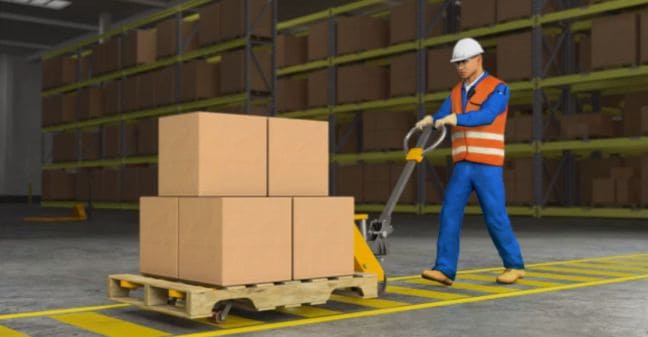
Pallet jacks are often seen as a safer alternative to forklifts because they don’t require a steep learning curve and they are smaller. However, data from the Occupational Safety and Health Organization shows that dozens of injuries and fatal accidents occur every year involving these common warehouse tools.
Basic Safety Guidelines on Using Pallet Jacks
Because pallet jacks are not seen as a complicated load-carrying tool, it is not uncommon for employers and supervisors to ask untrained workers to operate them, causing injuries and damage to property.
To prevent bodily injuries and damage property, follow these basic safety guidelines on using pallet jacks:
- Always push the load and never pull it.
- Move the pallet jacks slowly to give yourself sufficient reaction time in case your surroundings change.
- Don’t place your feet under a pallet jack or any machine; also, wear steel-capped boots.
- Always wear safety gear like gloves and eyewear (if you’re transporting dangerous chemicals).
- Follow the weight limitation/capacity.
- Go in reverse when going down on an incline.
- Pay attention to “pinch points” to avoid injuring your hands.
- Ensure the load is at least 1 inch higher than the ground; however, you may need to adjust it depending on your route.
Regular Inspection
Regular inspection is one of the safety guidelines of using any warehouse equipment. For example, in pallet jacks, make sure they are in good working condition, paying closer attention to their controls and wheels.
Most pallet jack-related accidents stem from worn-out or damaged wheels, causing the operator to lose control of the load.
Check Your Route in Advance
Make sure the route you are taking is clear and free of obstructions/hazards (e.g., uneven surface) before you begin moving your load. By planning your journey, the pallet jack won’t catch a snag or cause accidents.
Always Be Alert
As you lower the pallet jack, make sure that your hands and feet are away from the “pinch points.” Accidents often happen when workers are inattentive–i.e., they don’t pay attention to where they are standing or placing their hands while the pallet is being lowered or raised.
Ask for Help
If you’re pushing a pallet jack with a big load that obstructs your view, ask a coworker to guide you, so you don’t run into anything or anyone. Or better yet, avoid stacking loads higher than your eye level.
Pallet Jack Maintenance
A well-maintained pallet is a safe and “predictable” warehouse tool. Hence, make sure that you store it in a dry place (without any load) and inspect it regularly to ensure there are no worn-out sections or leakage/chemicals from the previous load that could compromise its structure.
Related articles:
If you need high-quality replacement parts for your pallet jack, call Wholesale Industrial Parts at (844) 588-8455. They sell a wide range of tires, replacement parts, and equipment commonly used in the warehouse industry.
Wholesale Industrial Parts is a Sacramento-based company that ships anywhere and offers a mobile tire press service for their local customers.
